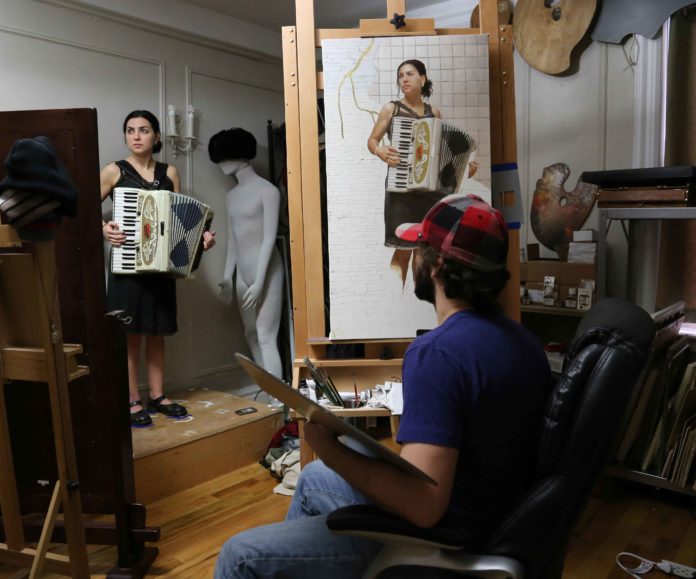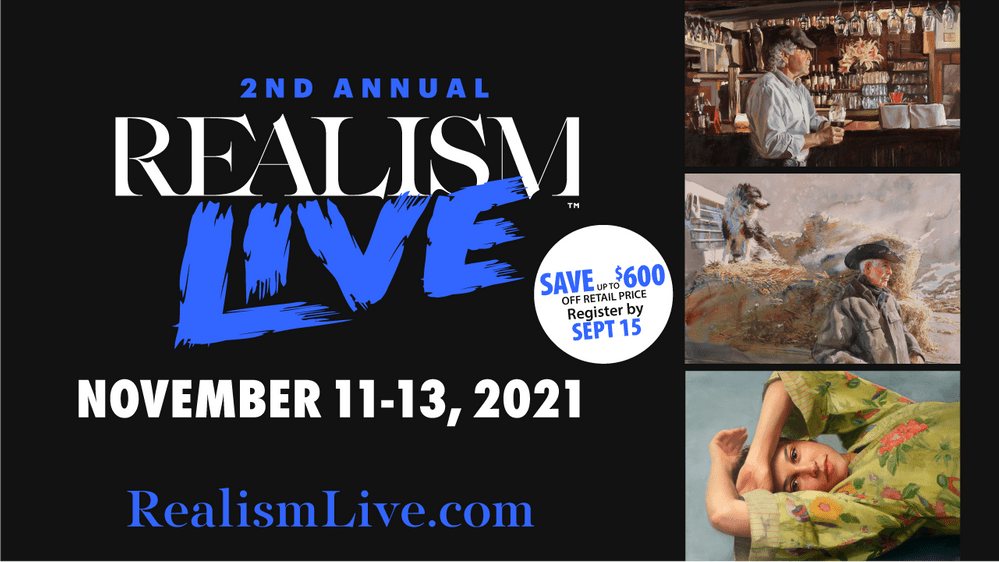On Painting From Life > Classically trained figurative artist Gregory Mortenson shares ways to be economically conscious while still feeding your passion for painting portraits and/or the human figure.
Painting From Life on a Budget
BY GREGORY MORTENSON
Painting a portrait or figure from life is what makes me passionate about making art. It’s the process that I love—the interaction with the person and the visual interaction with the figure in space. After spending 40 to 80 hours with a model, I start to feel I’m really getting to know them as a person. After staring at them for that long, I feel I really understand their structure and anatomy. The problem with that equation is the hourly wage of an art model, which can really add up. In this article I will describe some of my paintings and a few techniques I employ to get the best value out of my time with the model.
1. Self Portraits
Over the years, I’ve painted many self-portraits. So many, in fact, that it could be misconstrued as narcissism. The simple truth is that I am a very cheap model. And I’m always around.
In college I took all of the life drawing and painting courses available, but I just didn’t feel I got enough time with the model. I tried to paint my friends, but they had limited time. So my last recourse was to paint self-portraits. It gave me unlimited hours to paint from life.
As a professional I like to always be working on a self-portrait as a back-up plan. If a model stands me up or gets sick, I have something else to work on.
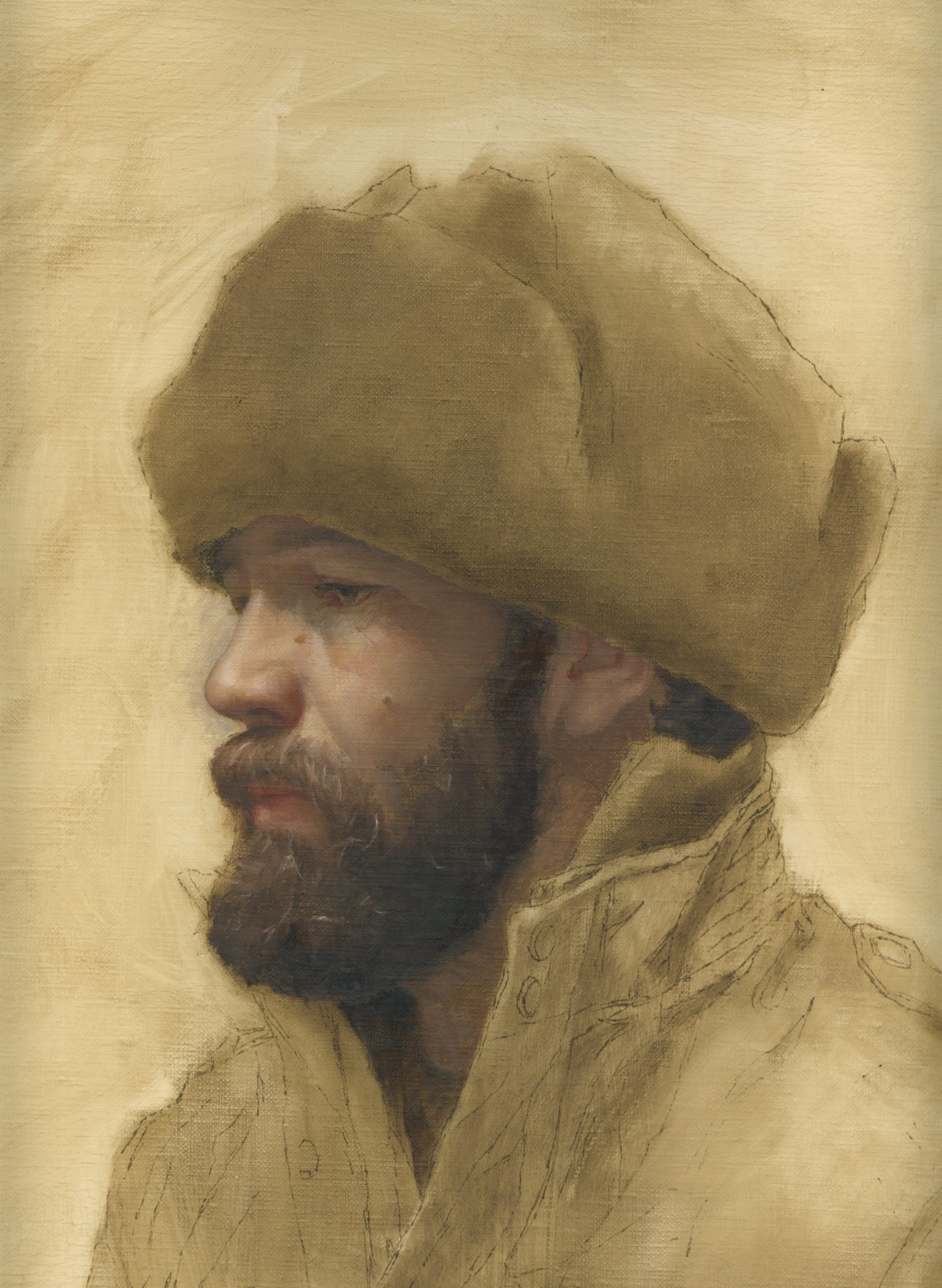
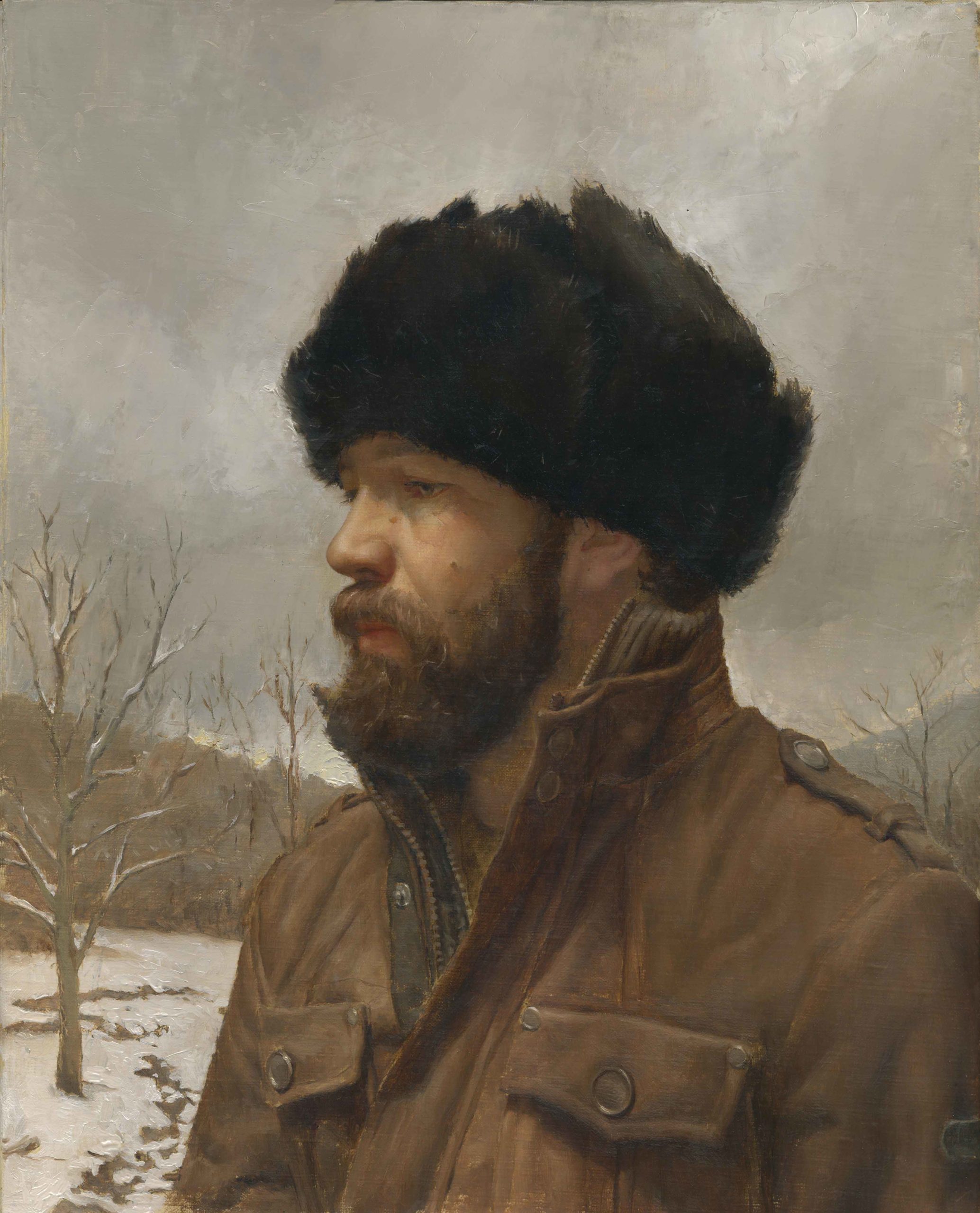
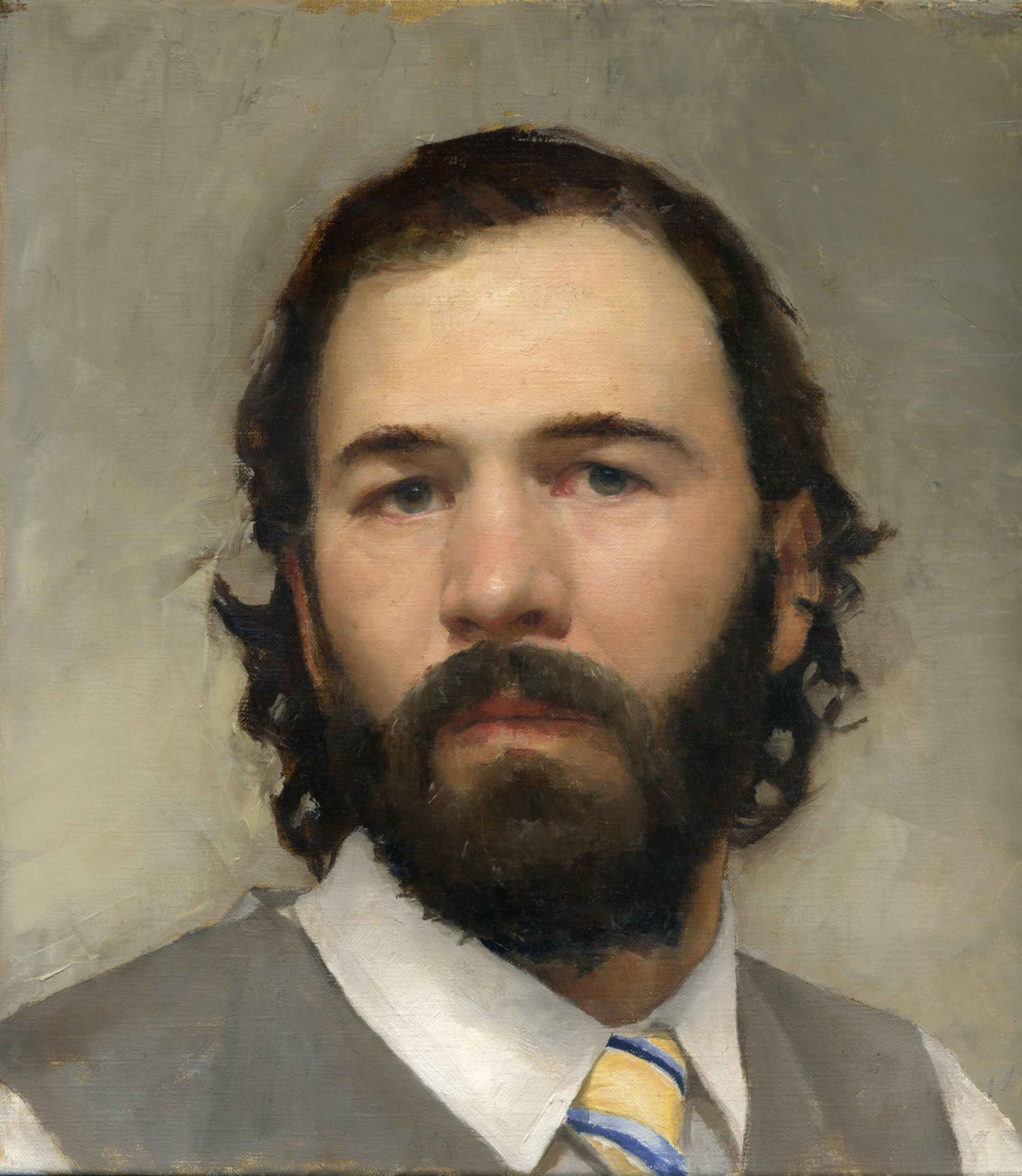
2. Mannequins
When I’m painting a nude, I’ll use the model from start to finish. However, if I’m painting a clothed model, I can sometimes use a mannequin to paint all the folds, buttons, and details of the clothes. With a model the folds are constantly changing as the model moves. With a mannequin you can set up the clothes like a still life.
I have a life-size, poseable mannequin that usually gets the job done. However, sometimes it just looks too stiff for a given project. I’ll often improvise by making an armature out of found objects: Styrofoam, wood, or anything I can find to make the mannequin’s pose more natural. I’ll sometimes make a mannequin more specific to my model with a few simple steps:
1. Place an old shirt on the model.
2. Wrap the shirt in duct tape.
3. Cut a seam down the shirt and remove.
4. Fill the shirt with stuffing and, voilà, you have a custom made mannequin that is roughly the same shape as the model.
Here are a few examples of when I’ve used a mannequin. For “Gethsemane,” a multi-figural commission that depicts an angel comforting Christ, my intention was to use John, a model with whom I have frequently worked. I intended to use him for both the angel and then the body of the Christ figure. I would then use a different bearded model for the portrait of Christ. This was a multi-figural composition where the two figures were interacting. Rather than hire two models at the same time, I composed the scene with John leaning on a mannequin.
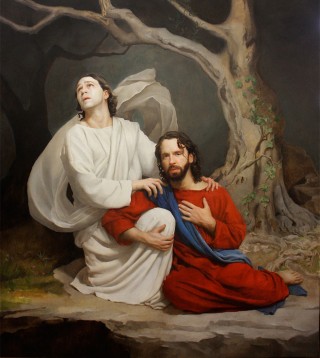
I sketched two loose but accurate figure drawings. Surface details weren’t necessary, as the final product would be draped in flowing robes. I just needed enough information to ensure my anatomy and structure were correct. In a painting or drawing, nothing is more disconcerting than having beautifully drawn fabric with nonsensical anatomy underneath.
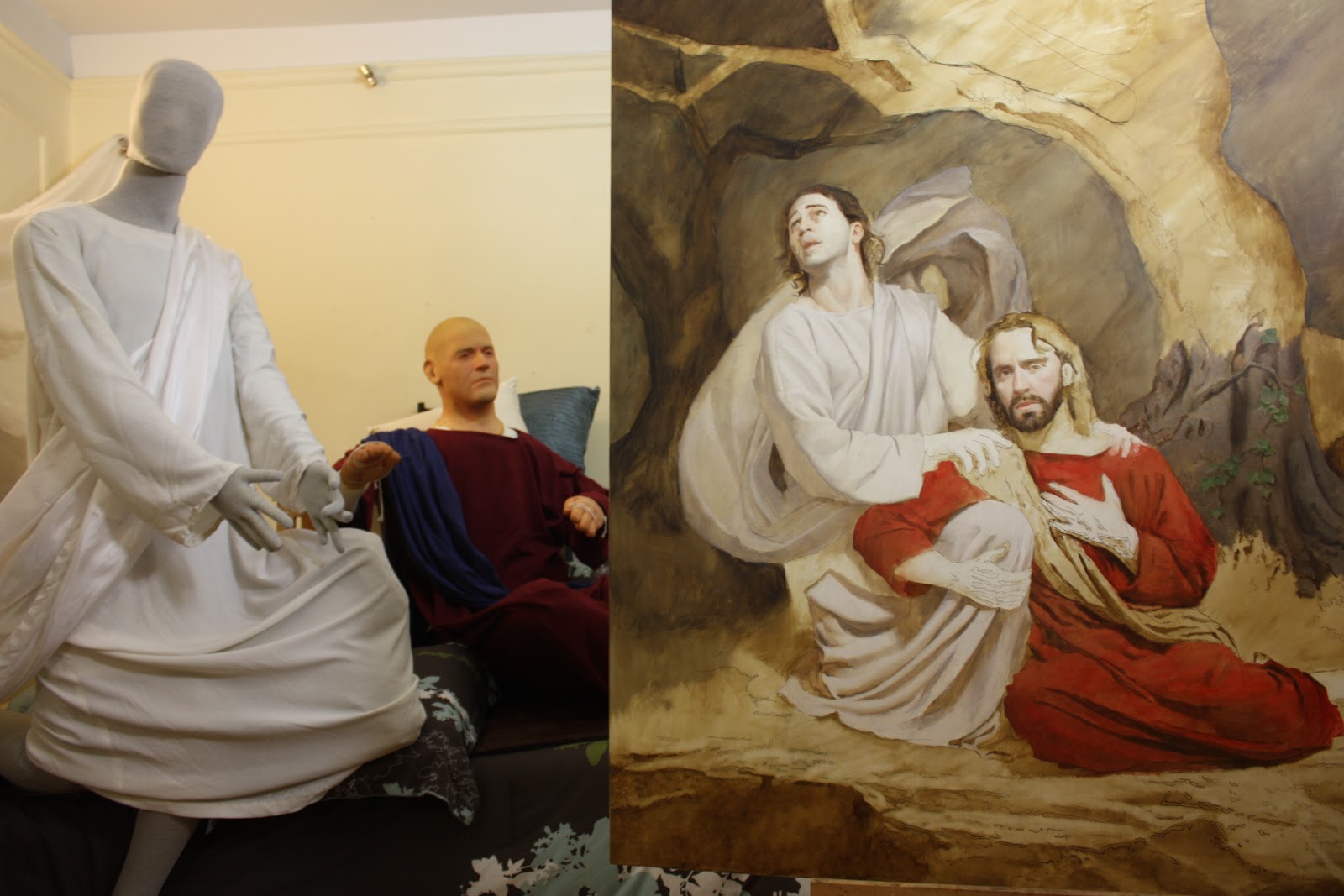
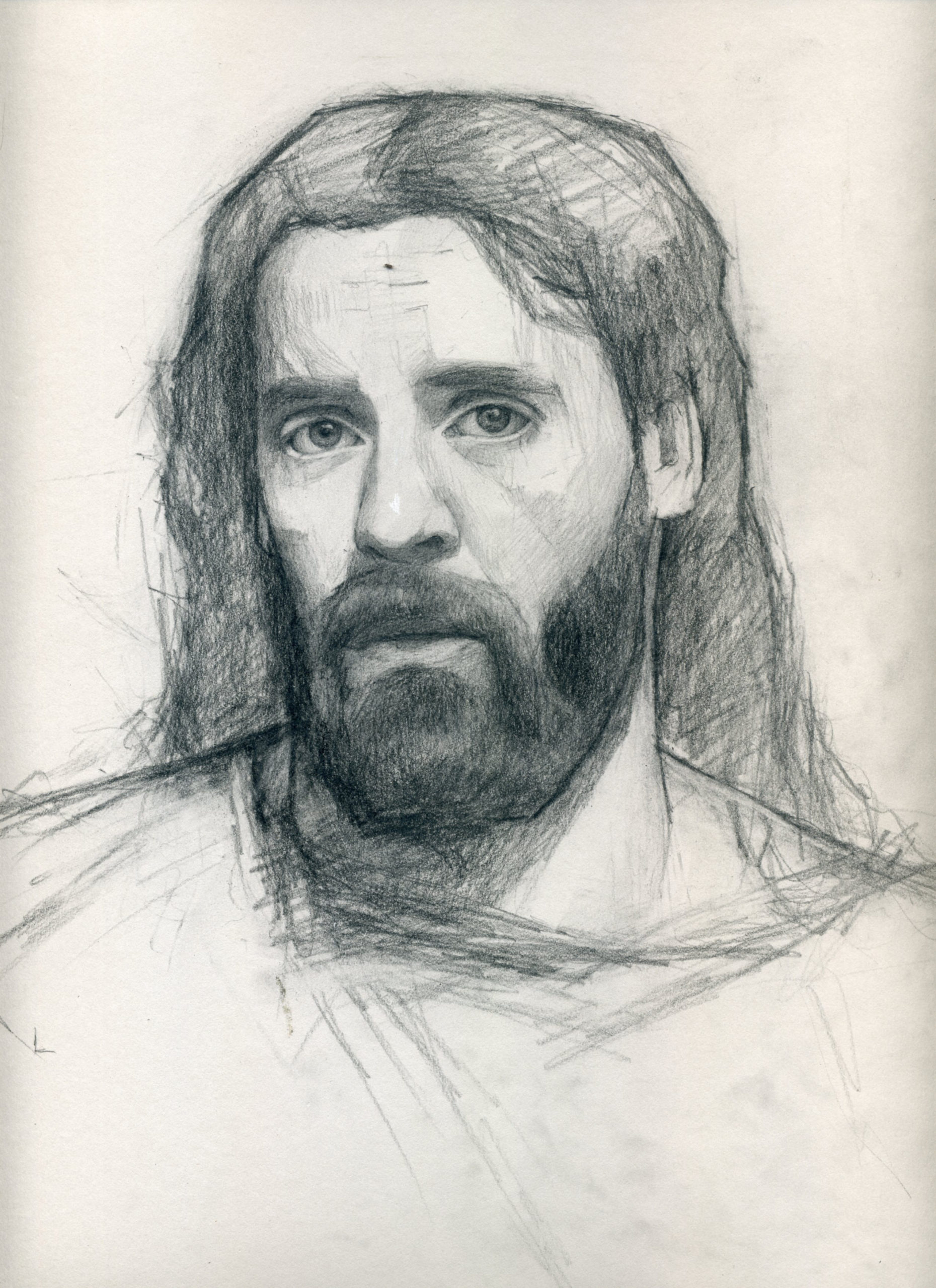
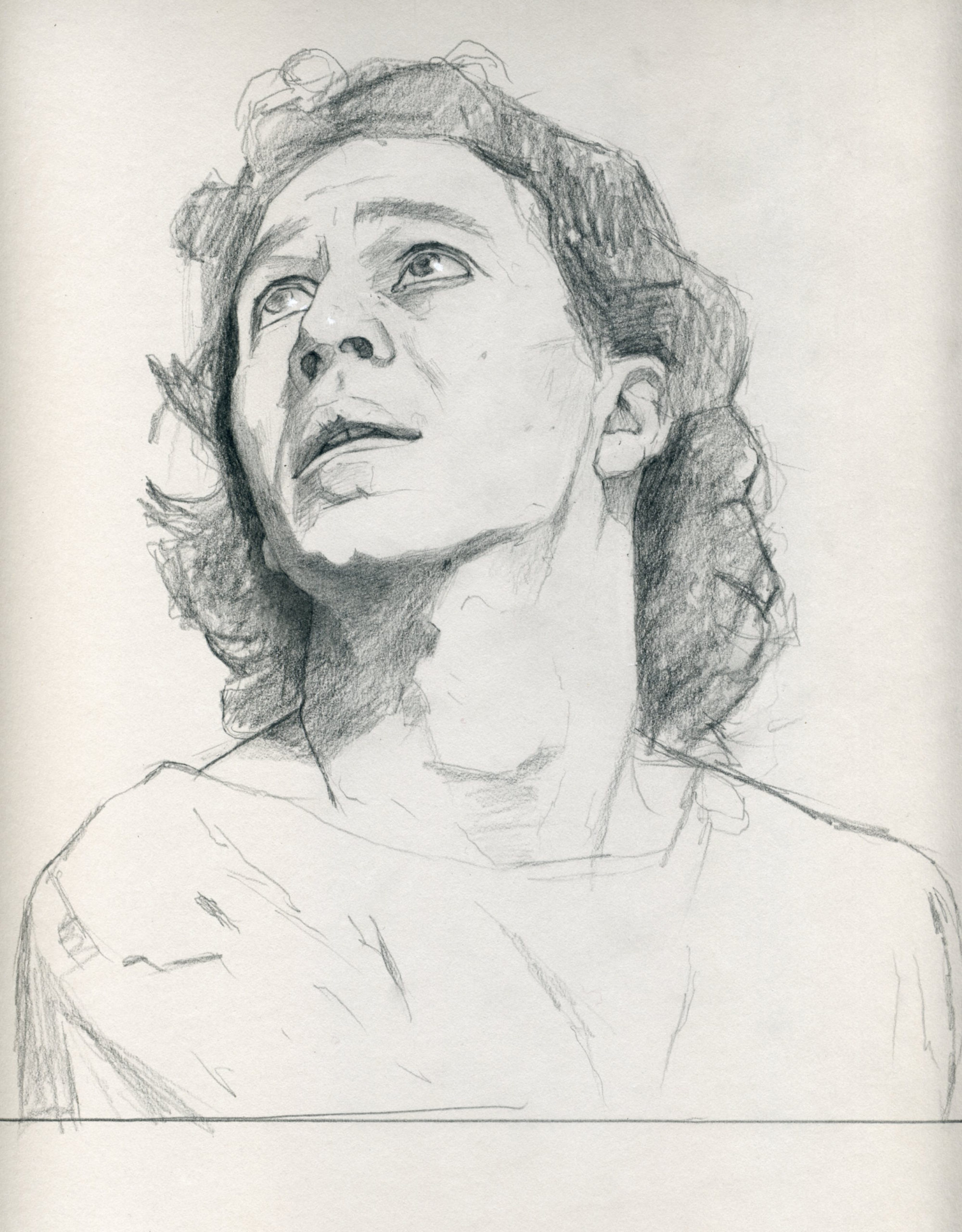
Next I placed John in some flowing robes. I used tracing paper over the drawings to work out some generalized details of how I wanted the robes to lie. I posed the mannequins as close as I could get them to the gestures in my drawings. However, some improvisation was necessary. The mannequins looked very stiff compared to the life drawings. To draw the information I needed I worked section to section. I got the legs perfect using cardboard and Styrofoam, and didn’t worry about the torso or arms until I was working on them.
On other projects, such as demos that I complete in workshops, or portraits that I paint in other group settings, I’ll only have time to finish the head with the model. I then return to my studio and set up mannequin with clothes to complete the torso.
Frankenstein Projects
A Frankenstein project is when I begin a painting with one model and finish it with another. The “Gethsemane” painting is a good example of this. As I mentioned earlier, I had planned on using John the model for both the angel, and then for the body of the Christ figure. I completed two drawings of the angel, a figure study and a portrait study. After I finished the figure study of the Christ figure, I hired a bearded model for the portrait study. After working with him for about four hours, I realized he just wasn’t the right fit for a Jesus character. He was handsome and bearded but looked more like a Viking or knight than a religious figure.
I was back to square one and needed a Jesus model. As it happened, John had started to grow out a stubbly beard and it dawned on me that he would make a better Jesus than an angel. This left me with a dilemma. It would be confusing for the narrative if the angel and the Christ figure were the same person. This is when my first Frankenstein project was born. I decided to go ahead and use John as Jesus. As I had put many hours into the drawing of the angel, I didn’t want to start over with a new model. I decided to use what I had already drawn, and make slight tweaks using my face in the mirror to create a fictional character that would have neither his face nor mine. However, because the angel is looking up and away, the pose was very foreshortened. Any slight change I made had large impact. Before long, the angel no longer looked like John, or a fictional person. He looked just like me.
As I began the Jesus portrait, John was growing in his beard, but it was still in the stubble phase. I needed a beard immediately. As it happened, I had my winter beard fully grown. I used a mirror and my beard to supplement John’s beard. This was my first successful Frankenstein project. The Jesus character I had created was neither John nor myself.
Another example of a Frankenstein project is a painting I began with a Russian actress. I was painting in a group of artists in a shared studio and only finished the painting of the head. I brought the painting to my personal studio unfinished. The model was a blond, petite beauty. As it happens, I’m married to another blond, petite beauty. Their body types were similar, so I had my wife don an evening gown and sit for me as I finished the torso. An improvised mannequin was also used as I painted the dress.
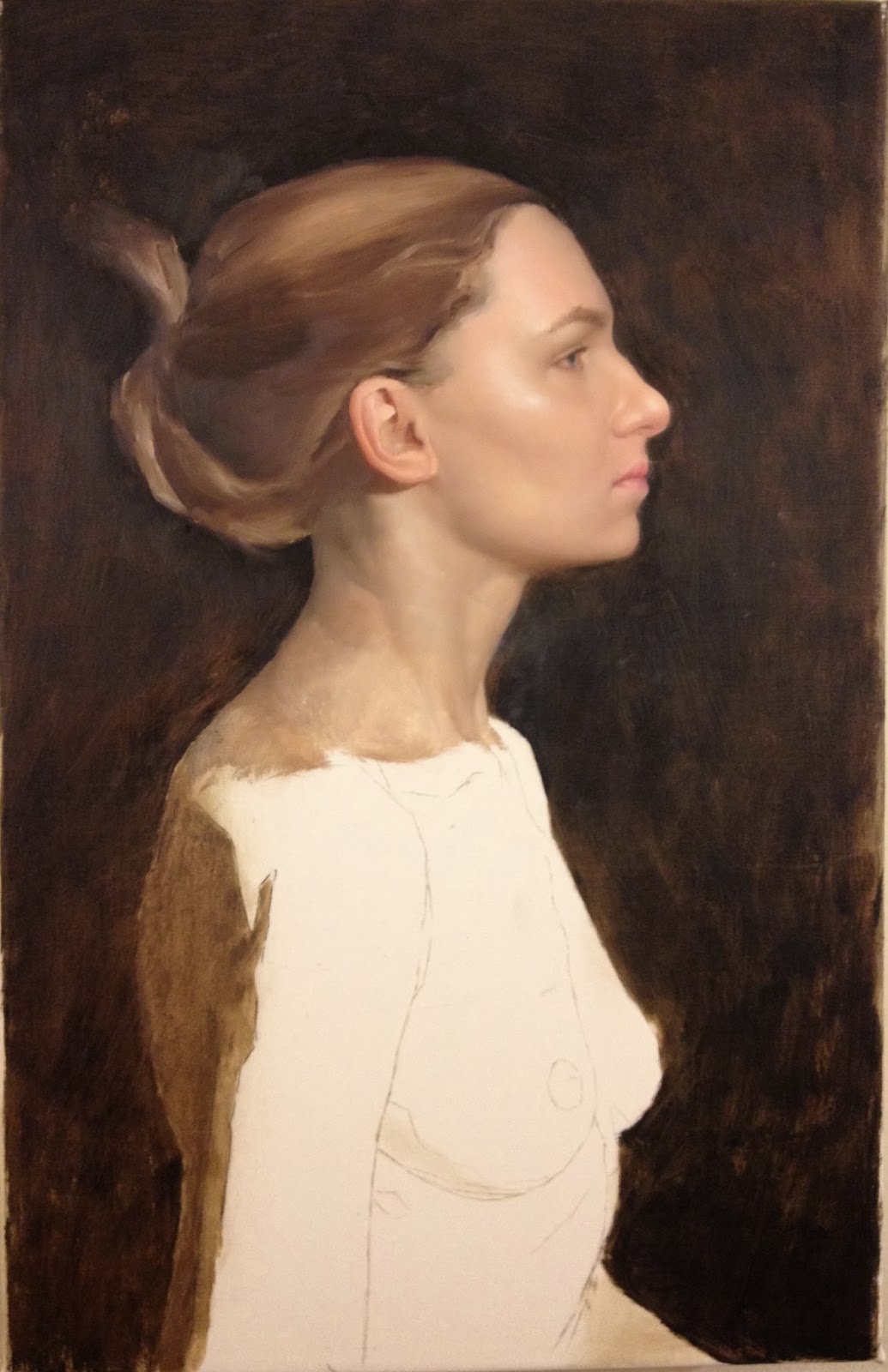
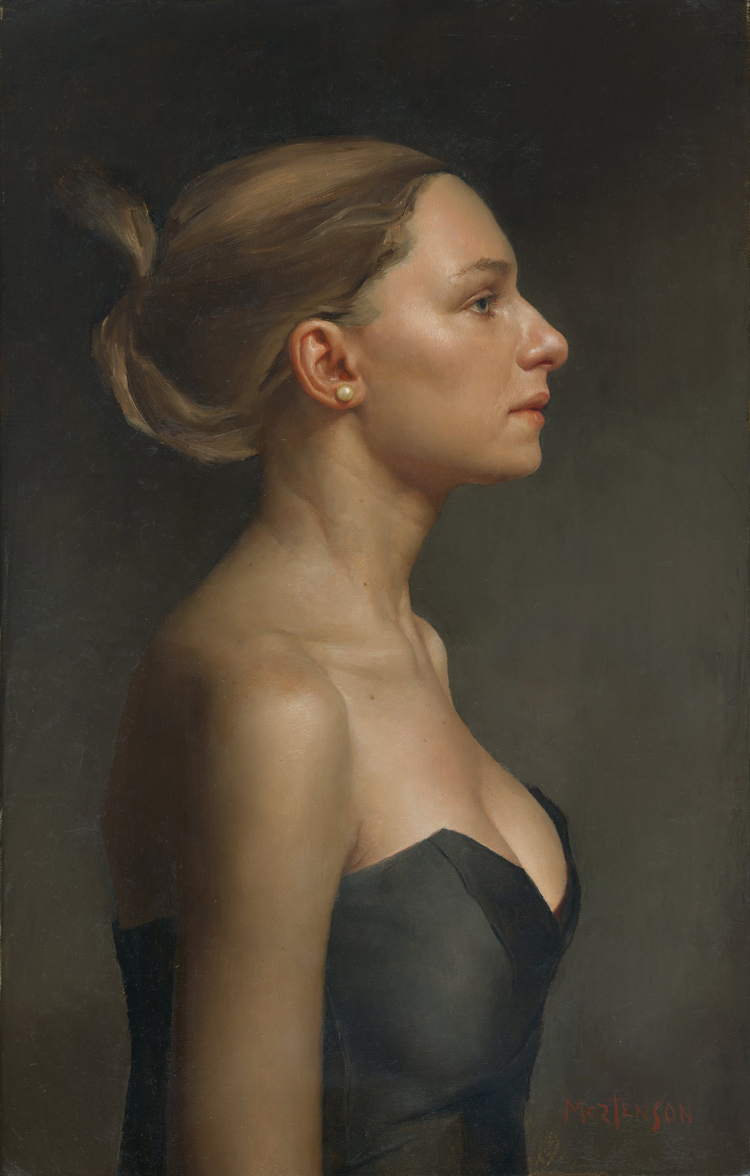
Painting in a Group
The best way to subsidize the model fee is to share the model with other artists. I’ll often invite other artist friends to my studio to paint with me and share in the cost of the model on whatever project I’m working. When I was studying at the Grand Central Academy and had no extra money for models, a group of us would meet at my studio every weekend and do alla prima portraits. There were six of us. Admission included bringing something for a pot luck dinner to feed the starving artists, and every week one of us had to either model or supply a model for the evening. ~G.M.
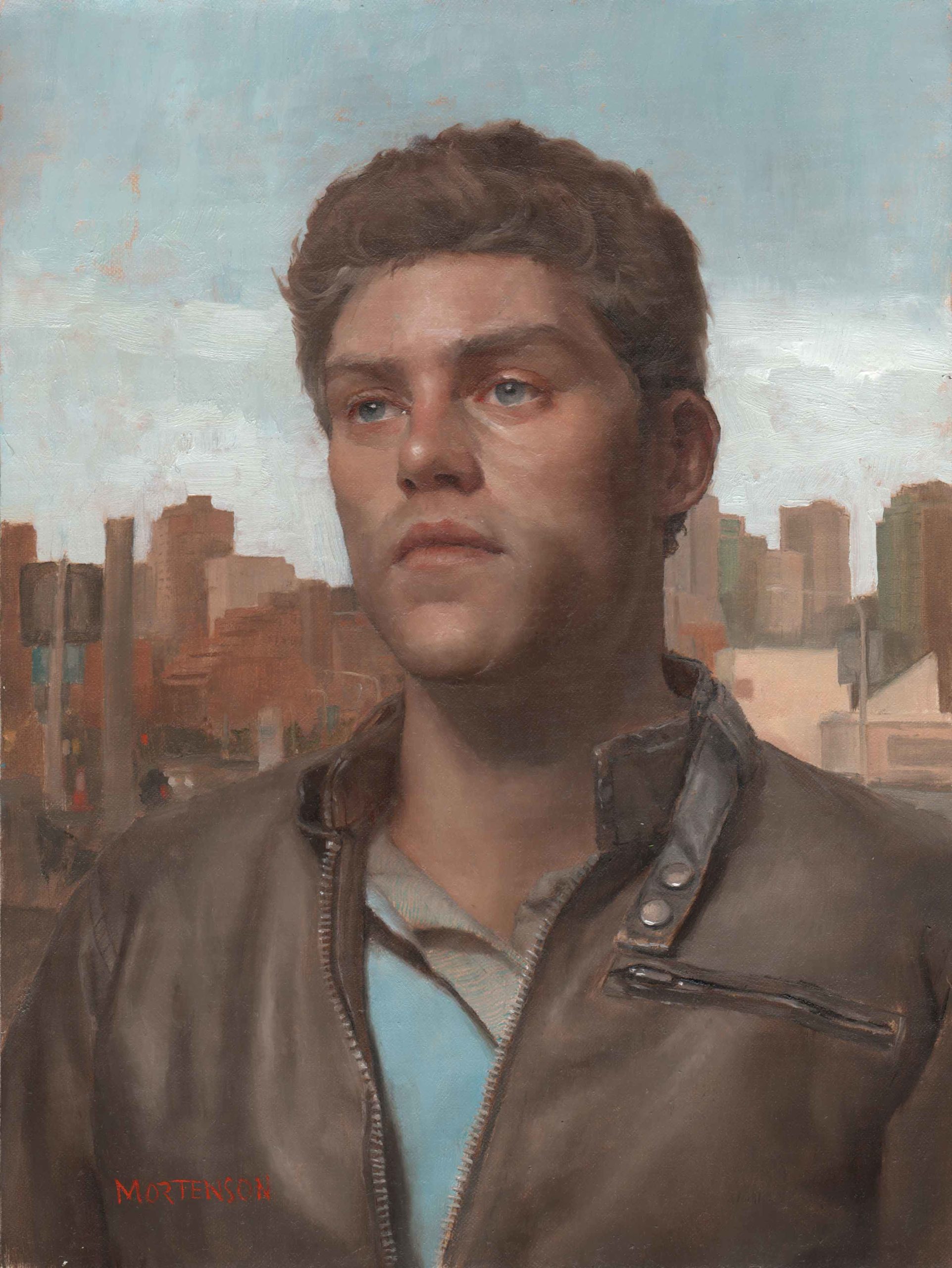
Do you regularly practice any of these ways to paint portraits and figures? Share your experience with us in the comments below.
Connect with Gregory Mortenson at www.gregorymortenson.com.
Browse RealismToday.com here to discover more articles with tips on how to draw and paint.
If you would like to learn Gregory Mortenson’s painting process, his self-portrait video reveals every step, which can be used for portraits, figures or self-portraits:
Visit EricRhoads.com (Publisher of Realism Today) to learn about opportunities for artists and art collectors, including:
- Art retreats
- International art trips
- Art conventions with sessions on painting from life and more
- Art workshops (in person and online)
- And more!


